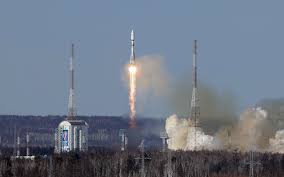
In a significant development highlighting the deepening relationship between Russia and Iran, a Russian rocket is scheduled to launch two privately built Iranian satellites into orbit early Tuesday. The launch, taking place at 02:48 Tehran time (2318 GMT on Monday), is part of a growing partnership between the two nations amid Russia’s ongoing military operations in Ukraine and tensions in the Middle East.
The Iranian embassy in Moscow announced the launch, emphasizing the collaboration in space technology. Iran’s ambassador to Russia, Kazem Jalali, stated on social media that the satellites, named Koswar and Hodhod, will be positioned in a 500-kilometer orbit. They were designed and manufactured by Iran’s Omid Faza Company and are intended to enhance agricultural monitoring, environmental oversight, and communication capabilities in remote areas.
This launch marks a notable milestone as it is the first instance of a private sector initiative in Iran’s space program, which has previously seen Russian launches of Iranian satellites. Jalali expressed optimism, stating, “There is hope that with the launch of these two satellites, a firm and decisive first step will be taken towards the entry of the private sector of the Islamic Republic of Iran into the space sphere.”
Despite these advancements, the West has raised concerns regarding Iran’s space endeavors, fearing that the technologies developed for satellite launches could be repurposed for ballistic missile programs, potentially including nuclear capabilities. Tehran, however, maintains that its space program is peaceful and operates within the guidelines of a United Nations Security Council resolution aimed at limiting its ballistic missile activities.
The growing partnership has seen Russia also utilize Iranian military technology, particularly self-detonating Shahed drones, in its conflict in Ukraine, further intertwining the military and technological cooperation between the two countries.
As the launch approaches, both nations look forward to the advancements in their collaborative space initiatives, marking a new chapter in their scientific and technological relations.
Sources By Agencies


